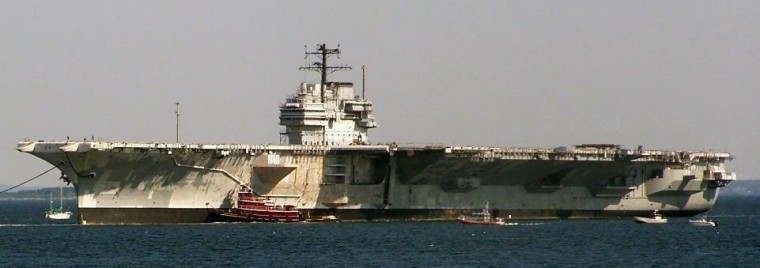It's a heave-ho, U.S. Navy style. After several years during which turning old warships into artificial reefs was fashionable, four decommissioned aircraft carriers will instead be dismantled, and recycled, at shipyards.
An environmental group that's been championing the shift said it makes sense: creating shipyard jobs in the U.S., instead of a potential toxic mess at sea.
"The Obama administration's new plan to recycle these four aircraft carriers appears to be a signal that the administration may be correcting long-standing misguided policies that not only squander resources, but American jobs as well," stated Colby Self of the Basel Action Network, a group that monitors global toxic issues and that last December issued a report critical of the artificial reefs.
The four decommissioned carriers are:
- USS Constellation
- USS Forrestal
- USS Independence
- USS Saratoga
The Navy would not comment but Navy records show that bids are being accepted to dismantle the veteran ships.
Self said the Forrestal alone has some 40,000 tons of recyclable steel, copper and aluminum.
"With a strong metal market, these recoverable metals could bring a return of up to $30 million," Self told msnbc.com. "After accounting for the ship purchase price by competitive bid, towing, environmental remediation of toxic materials and labor rates, the recycling of this vessel should be a profitable venture for the domestic ship recycling industry and should give the local economy a great boost."
Dozens of other warships have previously been dumped at sea or turned into reefs after efforts were made to remove toxic material.
BAN said that the environmental work on two recent aircraft carriers to meet that fate — the America and the Oriskany — cost more than $20 million each and that not all contaminants were removed.
The Oriskany was sunk off Pensacola, Fla., in May 2006 at a depth of 210 feet with the purpose of becoming an artificial reef.
The America was used for live-fire tests and scuttled in May 2005 at a depth of nearly 17,000 feet about 250 miles off the coast of North Carolina.
BAN estimates that recycling the Forrestal will save millions of taxpayer dollars and sustain about 1,900 jobs for one year.
BAN said it was still concerned that plans might still be in place to sink the decommissioned destroyer USS Arthur W. Radford next month in waters off Delaware, New Jersey and Maryland.
